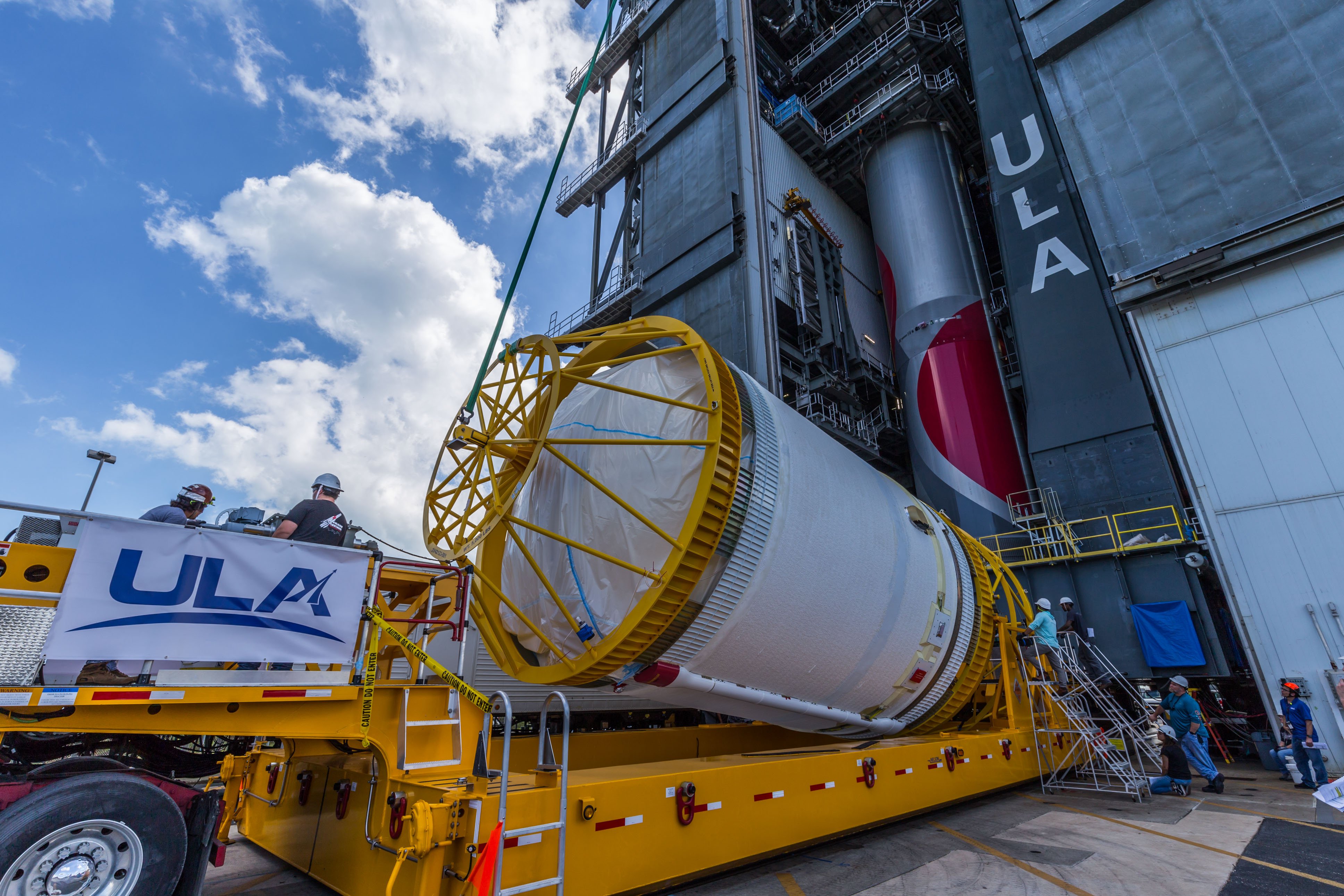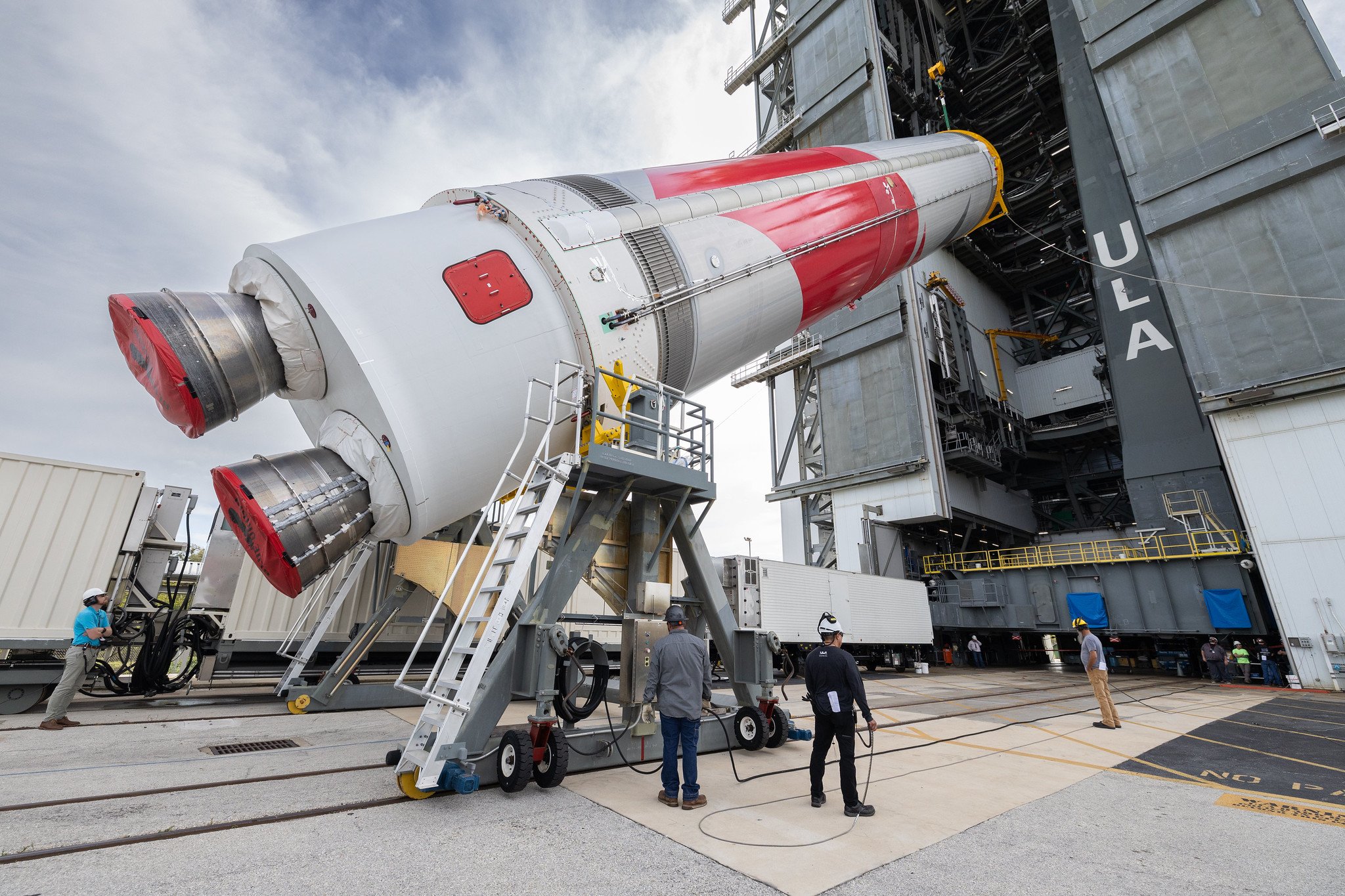
Embarking on a bold new era to broaden affordable access to space, the inaugural United Launch Alliance (ULA) Vulcan rocket now stands assembled at its Florida launch site for pre-flight testing.
ULA technicians successfully stacked the all-American rocket atop the Vulcan Launch Platform (VLP) in the Vertical Integration Facility (VIF) at Cape Canaveral Space Force Station in preparation for the first launch, called Certification Flight-1.
Teams used processes and procedures evolved from time-proven Atlas V operations to perform the activities known as Launch Vehicle on Stand (LVOS).

The work began Jan. 25 when the first stage was trucked to the doorway of the 286-foot-tall (87-meter) VIF for cranes to grapple both ends of the 109.2-foot-long (33.3-meter) stage and then rotate it vertically. Once upright, Vulcan was lifted into the building and secured to the four support fixtures on the VLP.
The following day, the 18.8-foot-tall (5.7-meter) interstage was attached to the top of the first stage. This hollow barrel segment connects the Vulcan stages during vehicle stacking operations for launch and encloses the twin RL10 upper stage engines during the boost phase of flight.
The high-performance Centaur V upper stage, measuring 38.5 feet (11.7 meters) in length, was hoisted into place to complete the initial buildup of the first Vulcan rocket, a major milestone that was achieved through the commitment and diligence of the entire ULA workforce, support contractors and suppliers from across the country.
Integrated testing of the rocket stages, VLP and ground systems will be conducted within the VIF over the next few weeks before Vulcan rolls out to Space Launch Complex (SLC)-41 to undergo a series of fuel-loading and countdown exercises. The testing culminates with a Flight Readiness Firing (FRF) to practice the full day-of-launch timeline complete with a brief ignition of the rocket's main engines.

After the FRF, the rocket will return to the VIF for installation of two solid rocket boosters and its payload for launch. The first launch will send Astrobotic’s Peregrine commercial lunar lander to intercept the Moon, deploy two Project Kuiper prototype broadband satellites into low Earth orbit for Amazon and carry a Celestis memorial payload into deep space.
Vulcan's innovative technology transforms the future of launch, meeting the challenging requirements now demanded by an expanding spectrum of missions that are essential to U.S. national defense – from low Earth orbit to high-energy orbits. Satisfying those specifications means Vulcan is well-suited for commercial and civil markets, including launching dual-manifested payloads and missions across the solar system.
Vulcan offers customers unprecedented flexibility in a single system. The single-core Vulcan has more lifting capacity than the Delta IV Heavy with significantly reduced cost and streamlined processes.
This new rocket can be built in less than half the time as its predecessors, launched at a much higher tempo, and will carry forward ULA's unique suite of technologies that give our rockets the world's most precise orbital insertions.
For more information, visit the Countdown to Vulcan page
See more photos in our Vulcan Cert-1 album

 Back To Blog List
Back To Blog List



